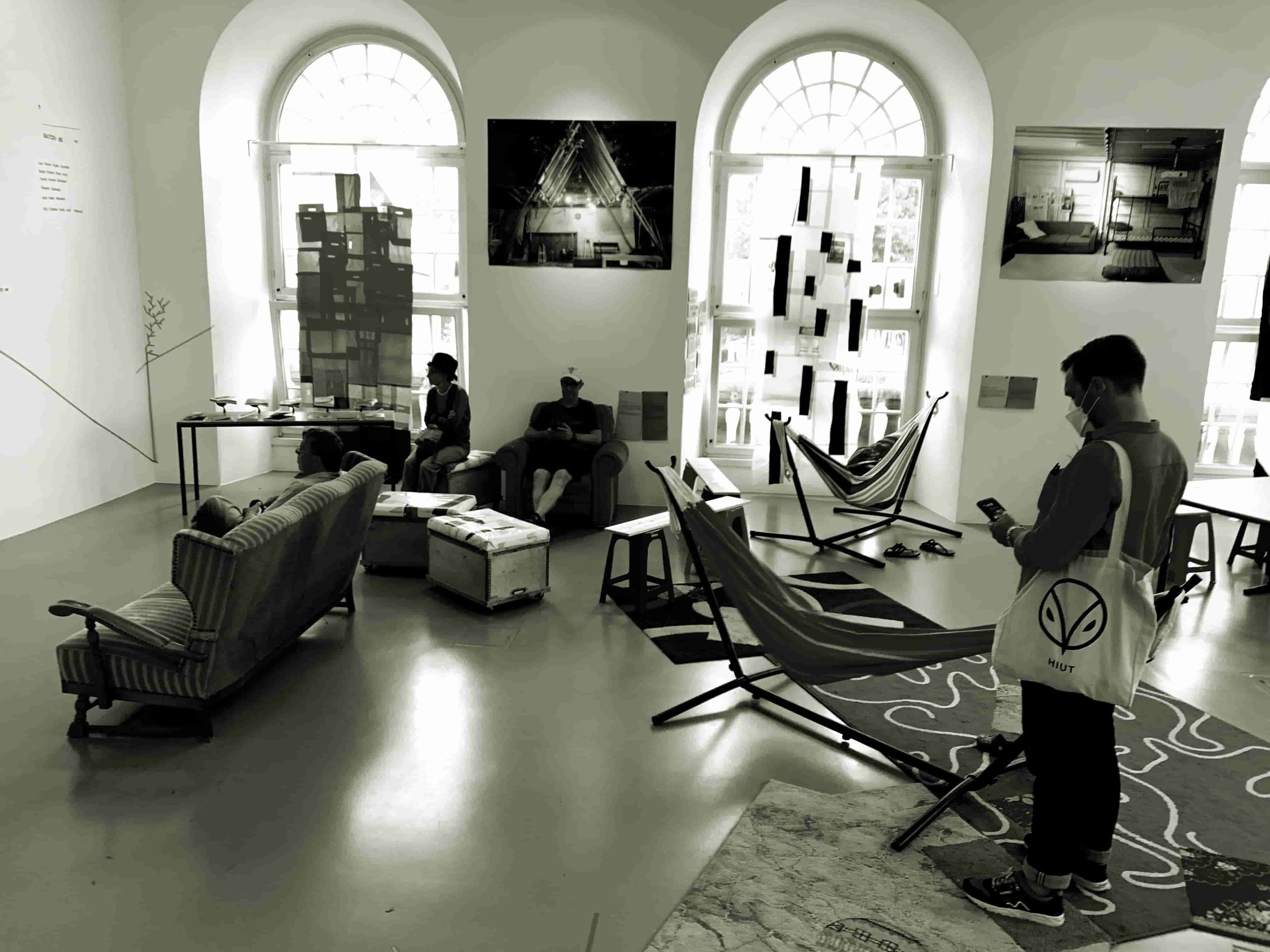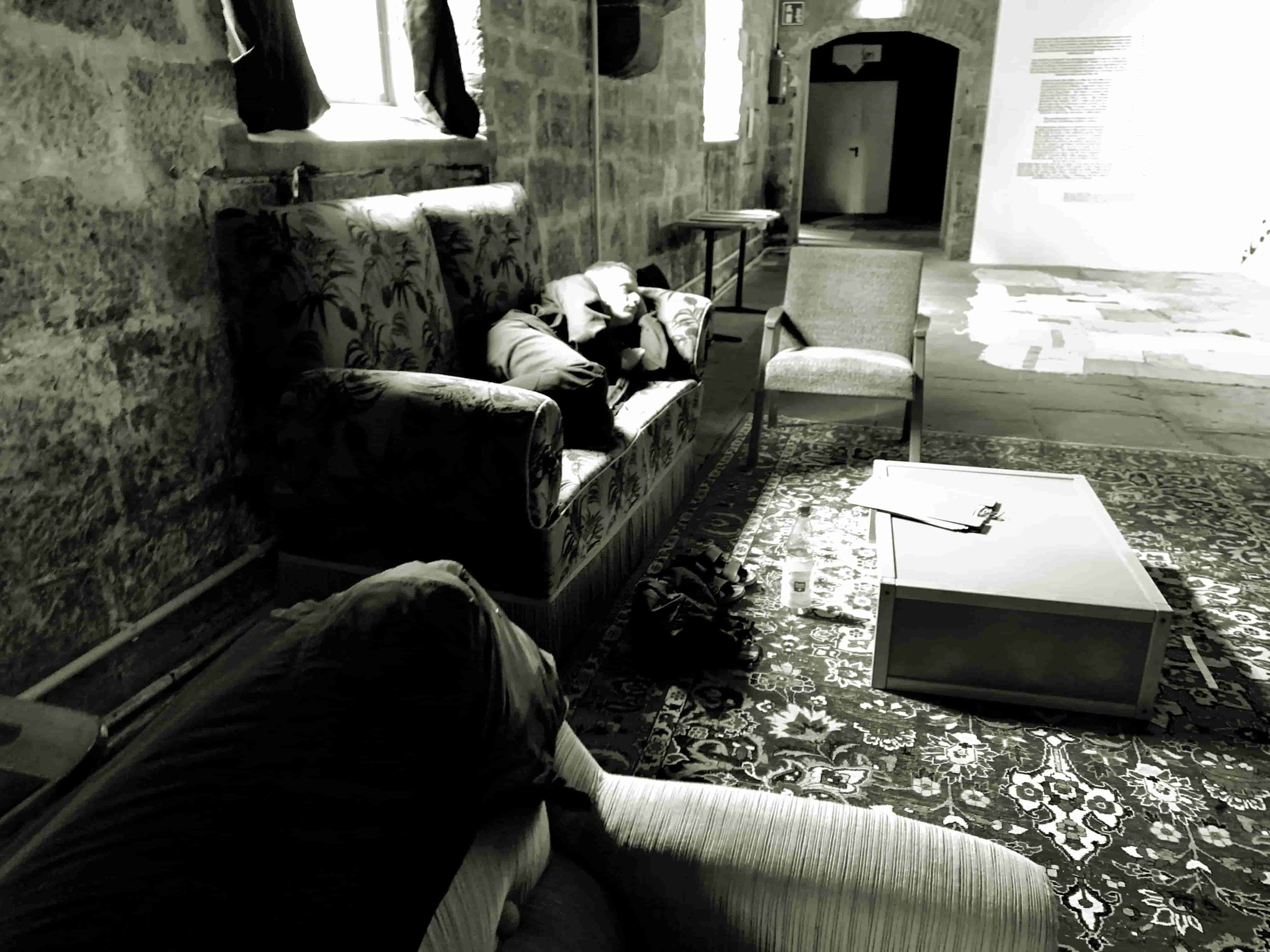When my friends asked me if I wanted to work with them on their participation in documenta fifteen I did not hesitate for a moment, not because the “job” itself, but because the opportunity to experience a (major) contemporary art event from within, as I already did with Younès Rahmoun in 2010 for Mathaf’s opening in Doha (Qatar). The fact of being friends and that my role used to be a technical one (not an artistic one) let me act freely when it comes to dealing with (famous) artists and curators since I do not consider myself to be part of the contemporary art world, at least not of the art market. Contrary to what some friends think or believe, I am just an architect, who sometimes takes photos, but not as a photographer, who co-organises residencies or researches with artists (Caravane Tighmert, Project Qafila, Caravane Ouadane), but not as a curator. In short, at these events I feel I’m rather an outsider and I love being one, especially when there are lots of curators, gallerists, journalists, institution directors… trying to be nice to everyone, when in fact most of them only pursue personal or economic interests. That is one of the reasons why I felt even luckier to learn about ruangrupa's intentions for this edition where art and society were a whole (as we also try in Tighmert and Ouadane), an attitude rather than a statement I was able to experience on every visit to Kassel, before and during the 100 days. In total, I spent 4 weeks in Kassel and what I regret the most is not having stayed longer and not having met more collectives (Chiara, Lara, Iswanto… they all told me I should stayed for the opening), but among the 72 official lumbung member and the collectives that they in turn invited, there were more than 1,500 participants, so there would have been needed more than 100 days to meet them all. Of course I had the opportunity to meet (and work with) very interesting people but I would have loved to coincide with someone from Malian collective, the Fondation Festival sur le Niger because we share with them a geographical space, the Sahara desert, and so cultures, besides, they are partners with our friends from Taragalte Festival in M’hamid el-Guizlane in their project Cultural Caravan for Peace. The time will come to meet them and do things together, in Ouadane, Tighmert or Marrakech.
Since our first meetings in December 2021 and January 2022, I shared a feeling with my friends in Marrakech that we were going to participate in an historical moment, historical for several reasons. I had consulted who had been the invited artists in all the previous editions of documenta and I only found one Moroccan artist, Bouchra Khalili in 2017 (documenta 14), which meant this was going to be the second participation of a Moroccan, in this case a collective of “artists”. Some people might think the invitation to a collective instead of a single artist is less important, nevertheless, I think the impact of LE 18 in Moroccan contemporary art will be, and it is already, larger than a single artist could have, among other things, for the implication LE 18 has with its society. Thus, they are creating, facilitating and encouraging new dynamics and initiatives at different scales; the medina, the city of Marrakech, Morocco and abroad, becoming a landmark where people can come to meet, chat, learn, teach, share knowledge, research… and always with an open and welcoming mood. The participation in documenta is, for me, a kind of confirmation that what we are doing is on the right way to continue developing a society, in a Moroccan context, through culture, objectives that do not coincide with those of the art market or the cultural industry, models that institutions in general (African, European, Arab...) try to impose on us. That is why I believe art historians should, from now on, include LE 18 as a key element of Moroccan art history. Time will tell whether or not its influence will be greater than that of the School of Casablanca, but surely it can already be considered more influential than other contemporary initiatives that monopolise the attention (they are important but they are not the only ones) or that try to impose their history of contemporary art in Morocco, as evidenced by the brief mention made of the LE18 and other cultural independent initiatives (which are the ones that are really building the artistic scene), in the catalogue of the Moroccan Trilogy exhibition that took place at the Reina Sofía Museum in Madrid in 2021. But in addition to the Moroccan perspective on the participation of a collective from Marrakech in Kassel, we should also think about this edition in particular.
Lots of things have been said and written about documenta fifteen, controversies aside (that have not deserved to monopolise the discussion on ruangrupa’s proposal as they have done), some articles advocate that the event has been a failure because there was no art at all, claiming for a return of classical exhibitions and established artists to Kassel, others maintain that documenta fifteen is going to change the art world. There was even a “dispute” between journalists from the same newspaper, The New York Times, one wrote this article and Siddhartha Mitter, that had already wrote one after the opening, replied on his Instagram account (using among others a picture of LE 18 event undoing documenta).
So, what is the assessment of the event, is it a failure or really a game changer?
I had the opportunity to talk with a Swiss curator I met by chance visiting a venue, outside the city centre, where Reinaart Vanhoe was working with local collectives (not related to contemporary art). Once Reinaart explained to him what he was doing in the neighbourhood, instead of proposing a solo exhibition, he told us it was his 5th documenta and according to him, he had never seen something like this and it was such a groundbreaking proposal that the art world needed. In another moment I talked to some sobat-sobat I met when they were doing the guide tours at WH22. I wanted to know the feedback they got from the visitors and what they loved most was the possibility to meet and talk with artists and members of the collectives. For them, it was the first time they could exchange with participants. What was even greater was that you did not need to pay a guiding tour or a ticket to meet artists and collectives, most of us organised open (and free) encounters for everyone; a concert, a film, a cooking session, an open discussion… any excuse was conducive to having a conversation where there was no distinction between audience and participants. These encounters is what ruangrupa calls nongkrong, something LE 18 used to do, but for which it is not enough to schedule them, you have to provide the conditions (a friendly space and welcoming people) so they can take place; they can be done, in the rear backyard of a museum, on the terrace of a riad, in its courtyard, in a garage, in a garden… you cannot do them in a luxury space with restricted access.
We will see if documenta fifteen is going to change something in other major events and institutions, nevertheless, museums and galleries cannot just copy ruangrupa’s “model”, the first thing they should learn is that it is not a model but an attitude, and even if they think they can imitate an attitude, they cannot, you have it or you do not, as The Turkish student explained to us, it is not because you place a sofa in an exhibition space that you are cool, if you do not create the atmosphere and provide a function related to that configuration, you are just doing decoration and if visitors want to sleep in the exhibition spaces, there is no problem at all...
Notwithstanding, it would be very interesting to think how a museum could assume the challenge proposed by ruangrupa, it would be a reflection that would imply the questioning of the very utility and purpose of the museum, as well as of its architectures to accomplish those objectives. For example, GudKitchen is not a restaurant but a place where people can cook and gather (for free), like a community kitchen; workshops could be done outside of the museums and not in specific spaces inside them… Maybe some years ago we could say it was not possible to implement these approaches, but we have seen them in Kassel, despite all the problems caused by the difference in mentalities between a German institution as documenta and a collective as ruangrupa from Indonesia.
documenta fifteen has also exposed the arrogance and intransigence of Europe and Western cultures. I do not know if we could affirm it is a kind of neocolonialism or the consequences of decades of colonialism all over the world. I do not agree with those terms because they imply a complex of victimhood. In some countries, people spend time and energy blaming colonisers and at the same time trying to copy their models and accessing grants rather than developing and changing their own culture and societies. I have always in mind the words of Eladio Dieste, an Uruguayan engineer that explained that during the 50s and 60s, poor countries like Uruguay could not afford to use technologies from other countries, not necessarily from the “first world”. He argued he could not build buildings using reinforced concrete shells as Félix Candela was doing in Mexico, so he developed a construction system based on local materials and knowledge to build the same kind of infrastructures but just with ceramic bricks. He did contemporary architecture (and engineering) based on vernacular one.
Coming back to culture, the main problem Western cultures have, in my personal opinion, is the extreme professionalisation of culture, perhaps needed to achieve economic goals, but not to move our societies forward, which should be a natural and longer process rather than an annual aseptic schedule of activities. In one of the press articles that appeared after the opening it summed it up very well, documenta fifteen showed collectives that put culture at the service of the community instead of using culture to make a living (at least the only way to make a living).
Of course I feel very identified with this vision of culture and its purposes, both in independence from Western cultures and in service to the community. In Tighmert, we do not have a permanent place, we do not have institutional funding, we do not try to do things like other associations, we do activities with our own means and knowledge, with the community and in a specific context, an oasis as we could explain in 2020 in Marrakech thanks to an invitation of Elvira Dyangani to the Forum of the African Contemporary Art Fair, 1-54 Enacting Agencies (Elvira was the director of The Showroom in London at that moment and now she is the director of MACBA in Barcelona, but she is also a member of Finding Committee for documenta fifteen). And when you change the context and you adapt your goals to people living in it, for example a medina instead of an oasis, then the result is LE 18. I think this is the reason why LE 18 invited Caravane Tighmert to their public program (in Marrakech and Kassel), because we share attitudes, regardless of the different contexts and results.
SAME ATTITUDE, DIFFERENT CONTEXT, DIFFERENT APPROACHES, DIFFERENT RESULTS BUT SAME GOALS
In this same sense, it was very interesting to observe how ruangrupa transferred their attitude from Indonesia to Kassel, a process explained in documenta fifteen handbook and in their proposal for documenta in 2019.
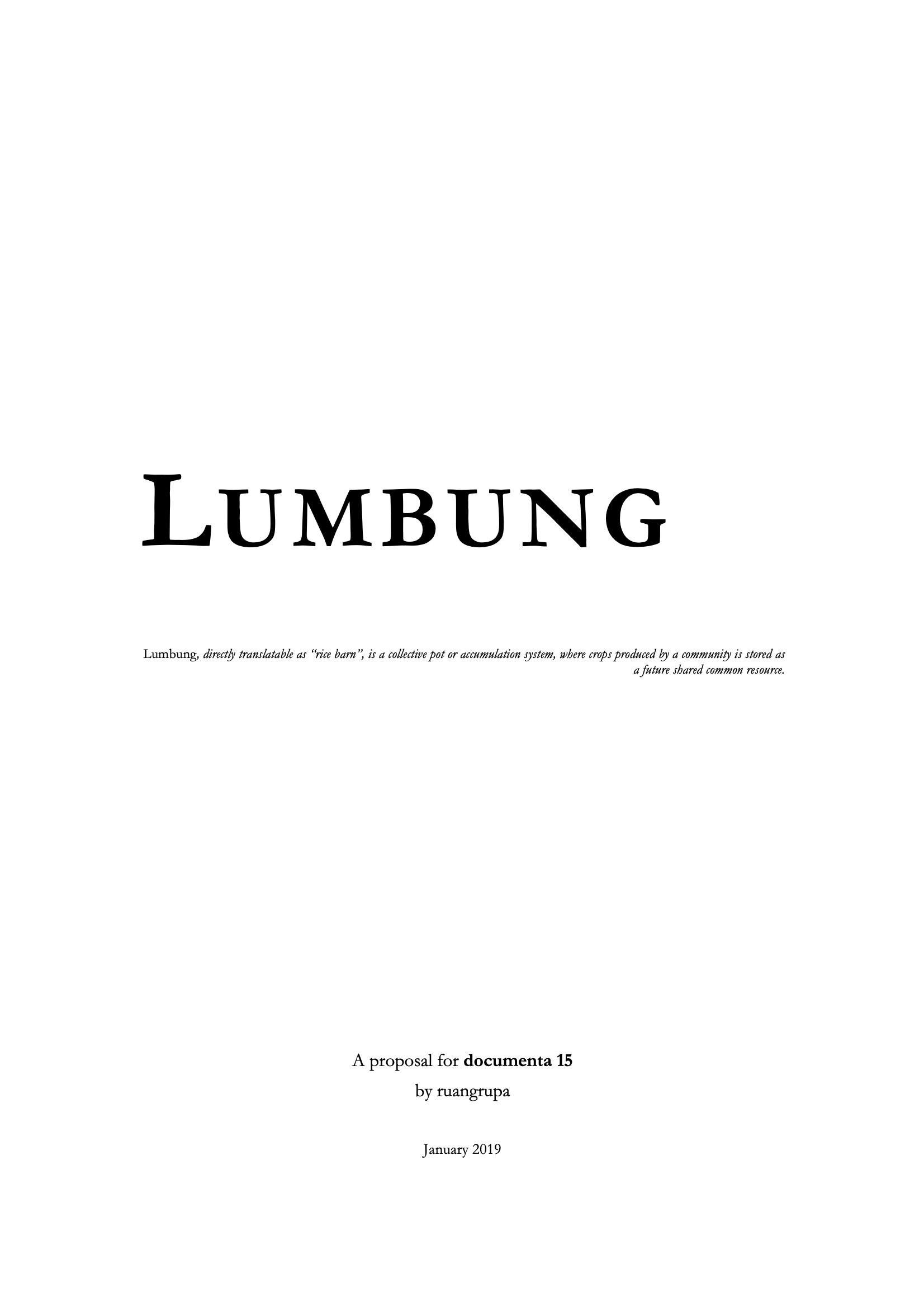
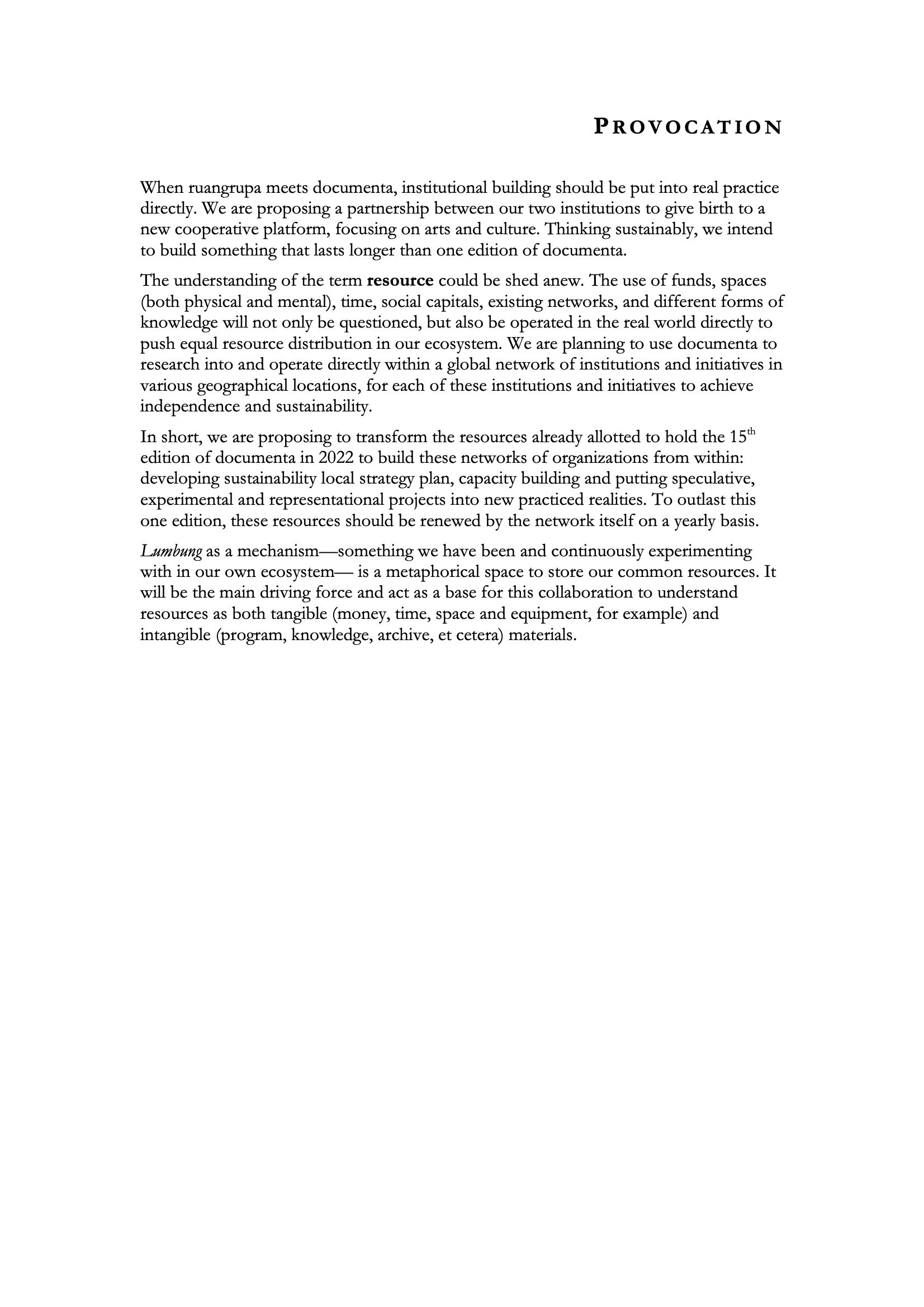
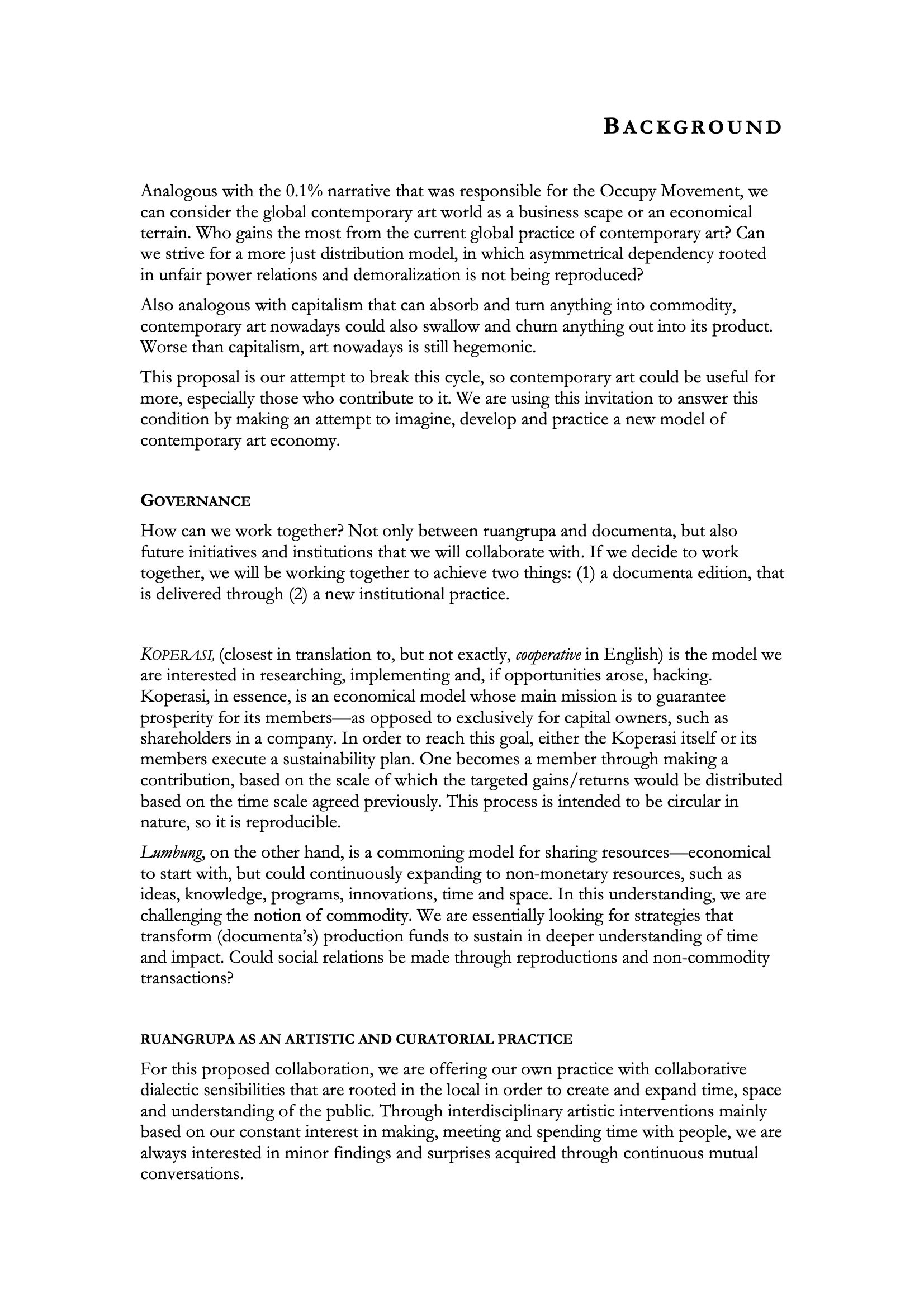
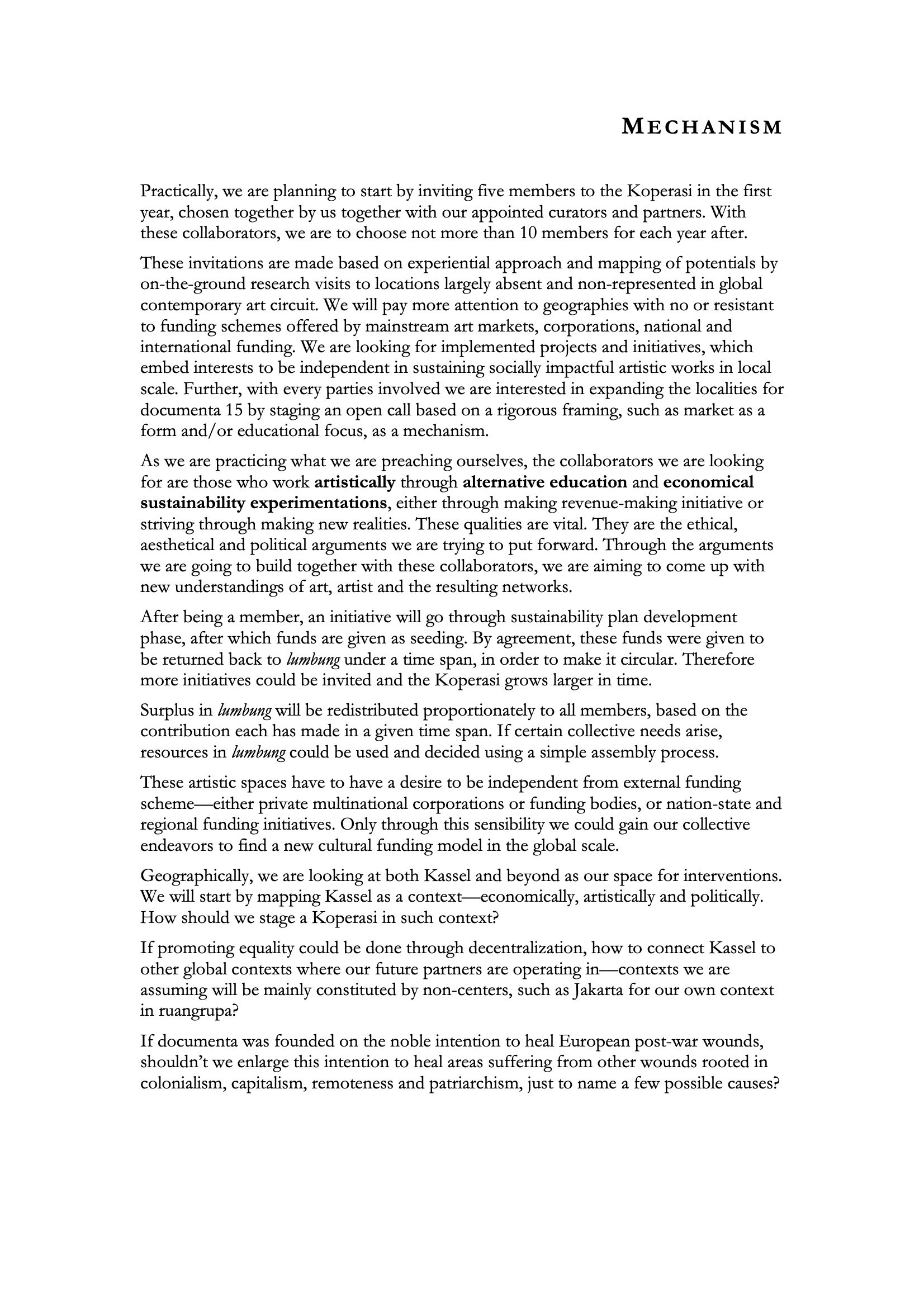
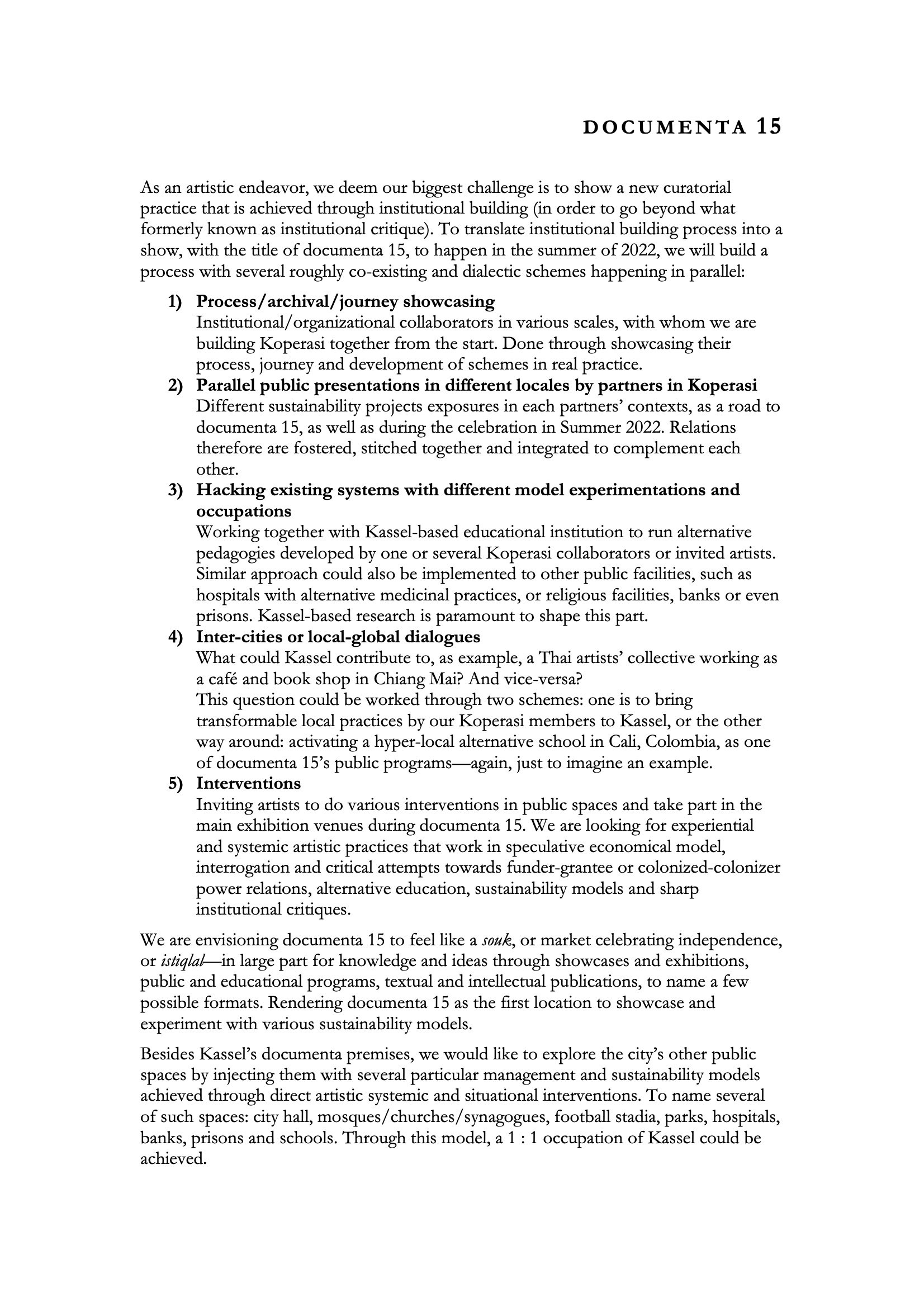
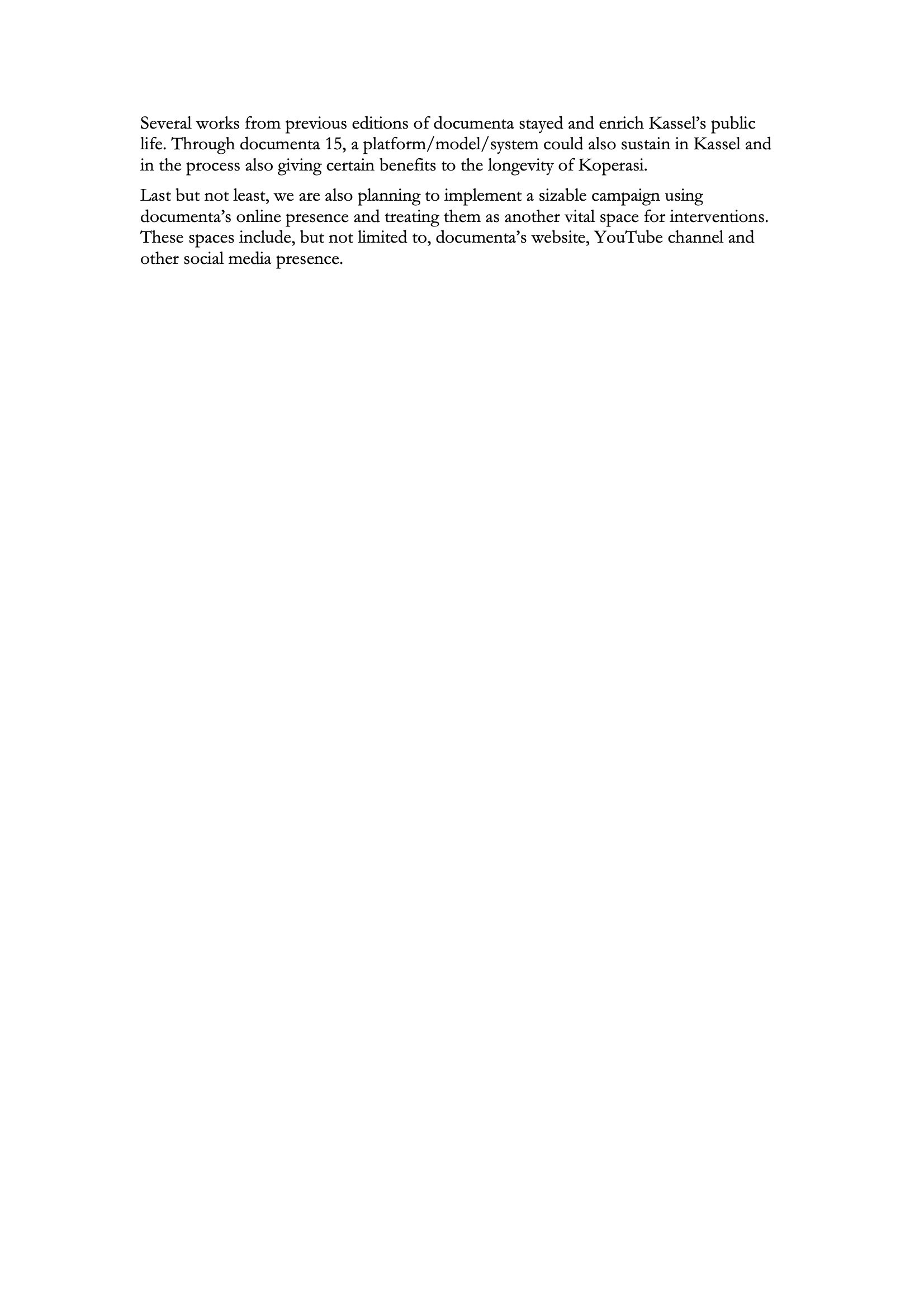
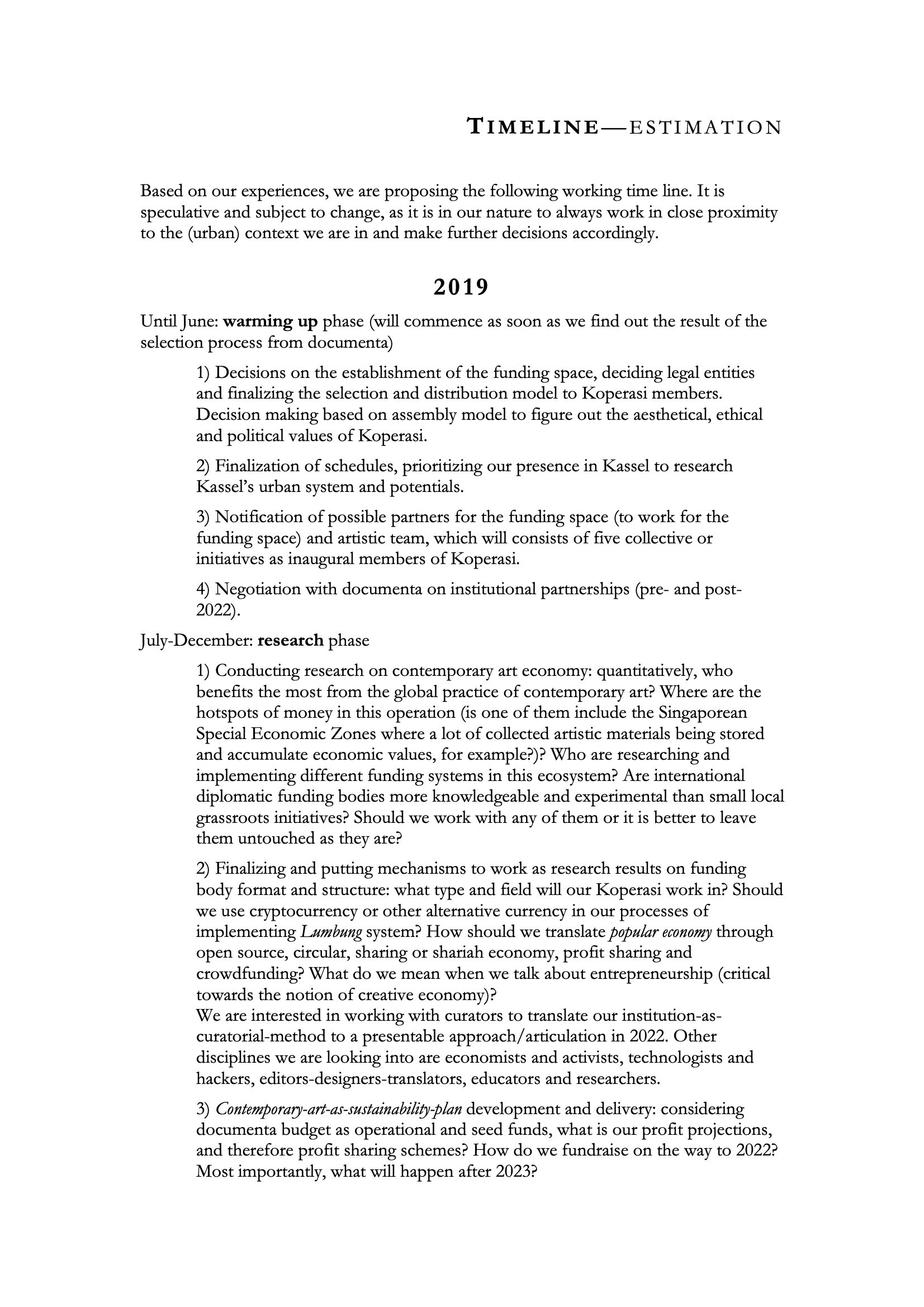
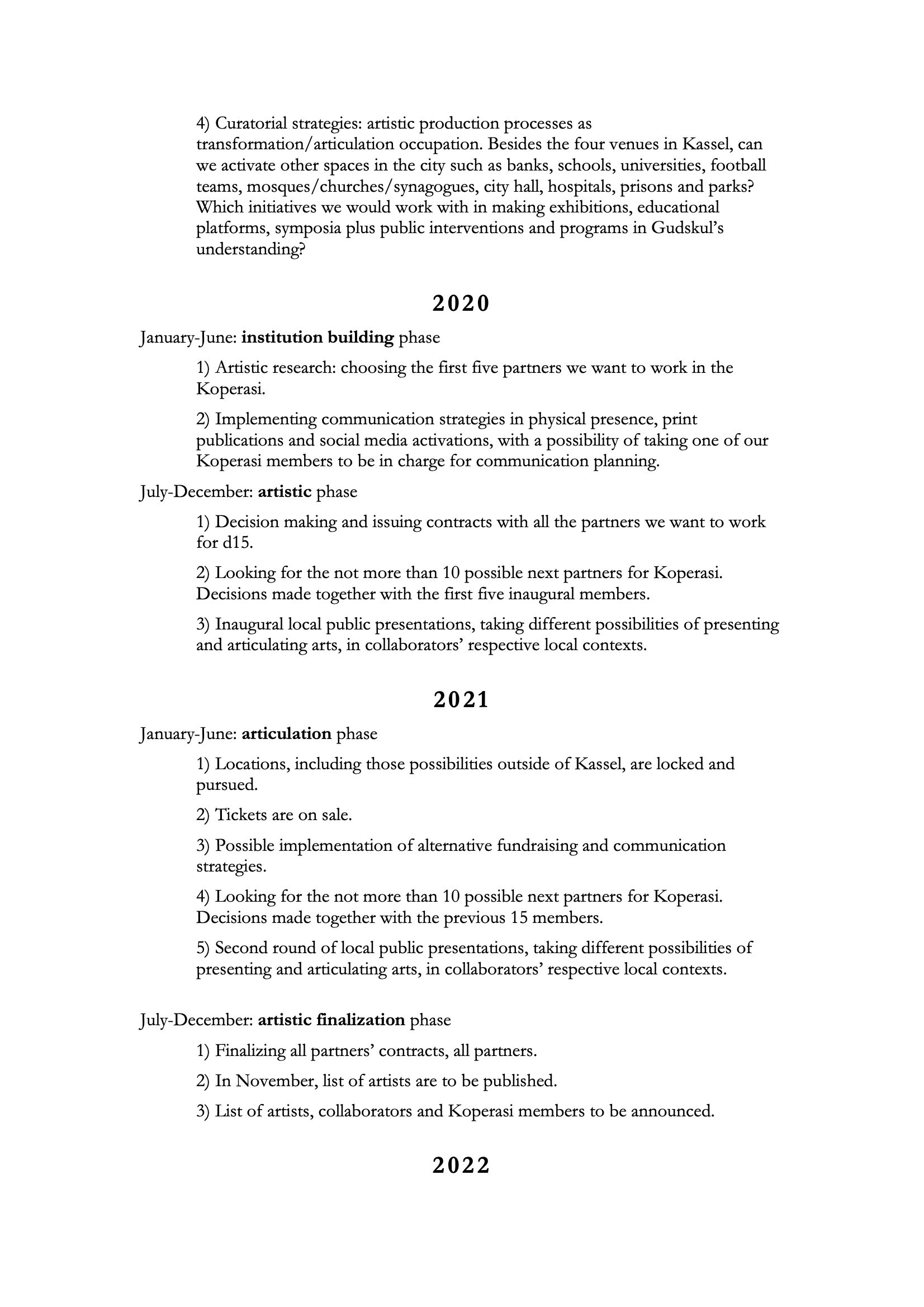
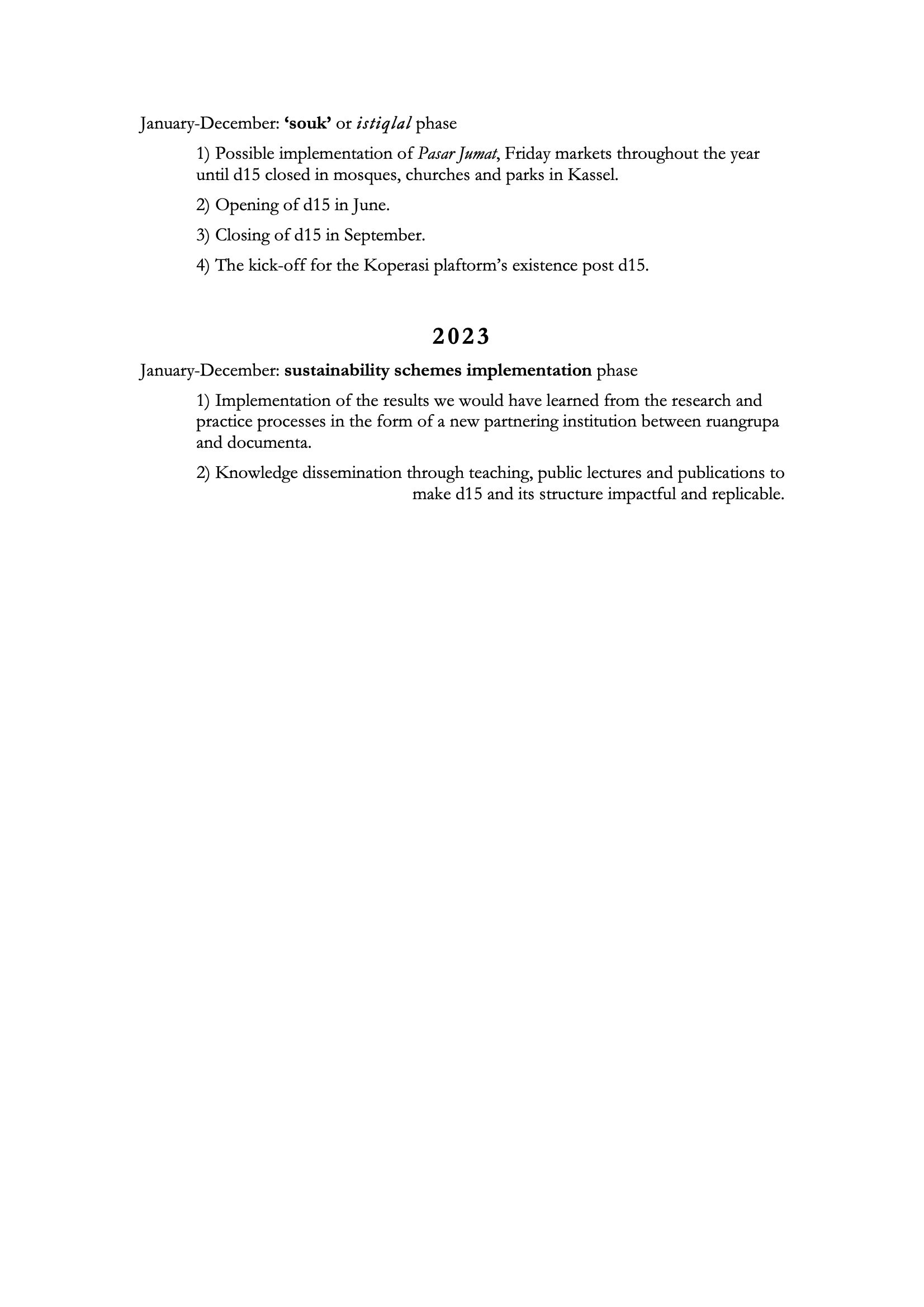
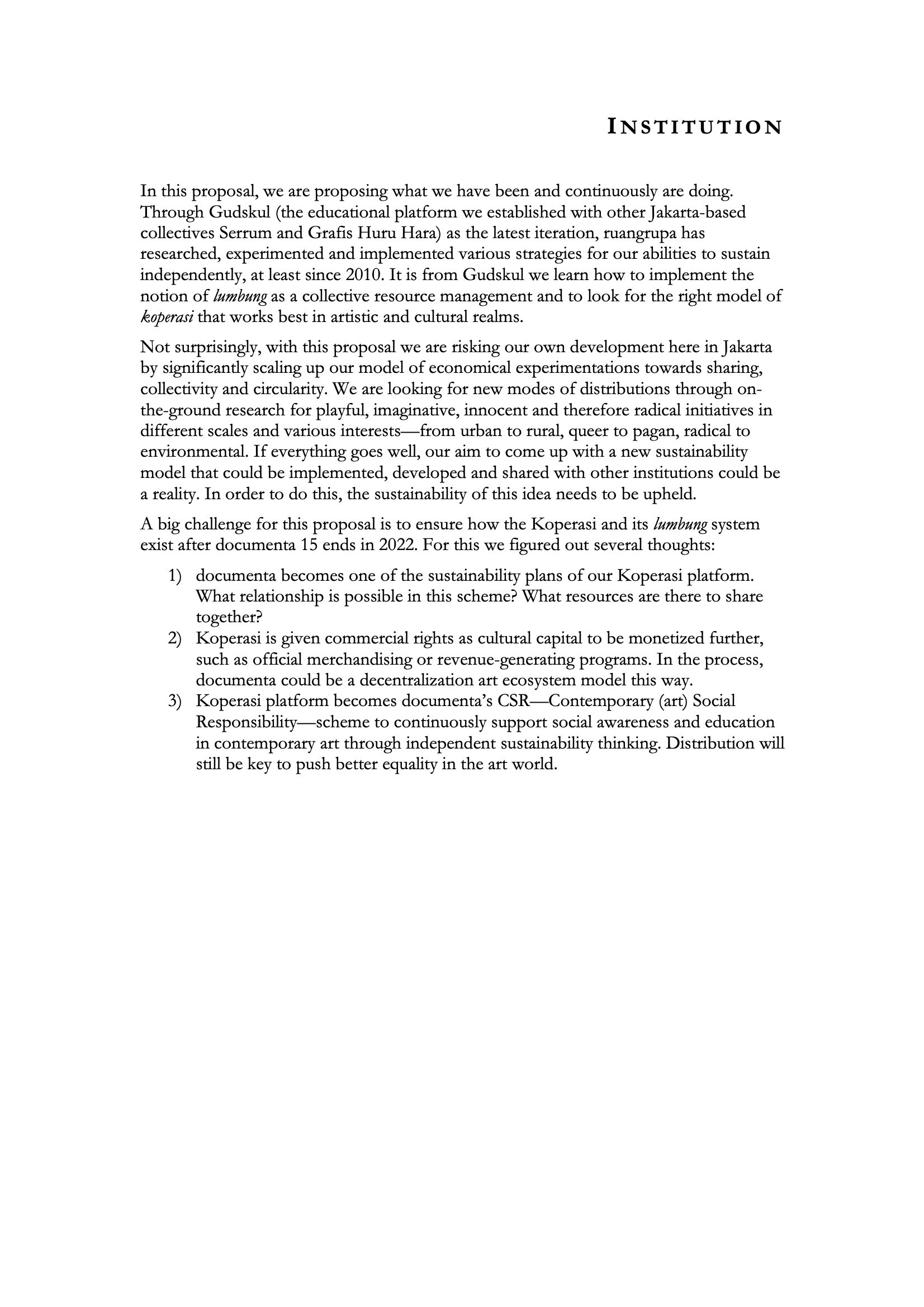

To summarise, I don't think documenta fifteen is going to change anything in the art world (some articles on this topic; Aneta Rostkowska and Giulia Bellinetti, Kate Brown, José Manuel Springer, Maria Nadotti), I don't think that was ruangrupa's purpose either, what the notion of lumbung applied to culture has revealed is the existence of open, lively and inclusive cultures all over the world instead of cultures that still live from the past and close themselves off as if nothing could happen out of their bubbles. The contemporaneity of the West is the conservatism of its own past. The problem arises when you try to make them see the dangers they are running. Culture should be used to change mentalities, but that implies to be in the front line when extremists try to impose the “vision” of their own world, and we don’t have the same means to fight against, since medias and politicians are more receptive and reactive to extremist speeches than to cultural proposals, even if culture are to improve our societies. In the meantime, let’s lumbung continues, and let’s do our best with our communities through culture.
lumbung will continue!
photo: Laila Hida
P.S. Despite the ambitious plans LE 18 had for documenta fifteen, at the end there was “only” a public program. It might seem we were not able to accomplish everything, the exhibition, the artists diner, the printed publications, the digitalisations of all the audiovisual archive, the new website (with an online archive)… Nevertheless, if we take into consideration that we had 5 months and the small team working on this event, I really think we can be very proud of our achievements, I would like to express my admiration especially to Laila, Francesca, Nadir, Soumeya and Amine, I cannot find the words to thank them enough for allowing me to be part of LE 18 in this wonderful experience that has been documenta fifteen, and also for including Caravane Tighmert in their program and becoming a participant in the event.
Credits texts, photos and drawings: Carlos Pérez Marín


